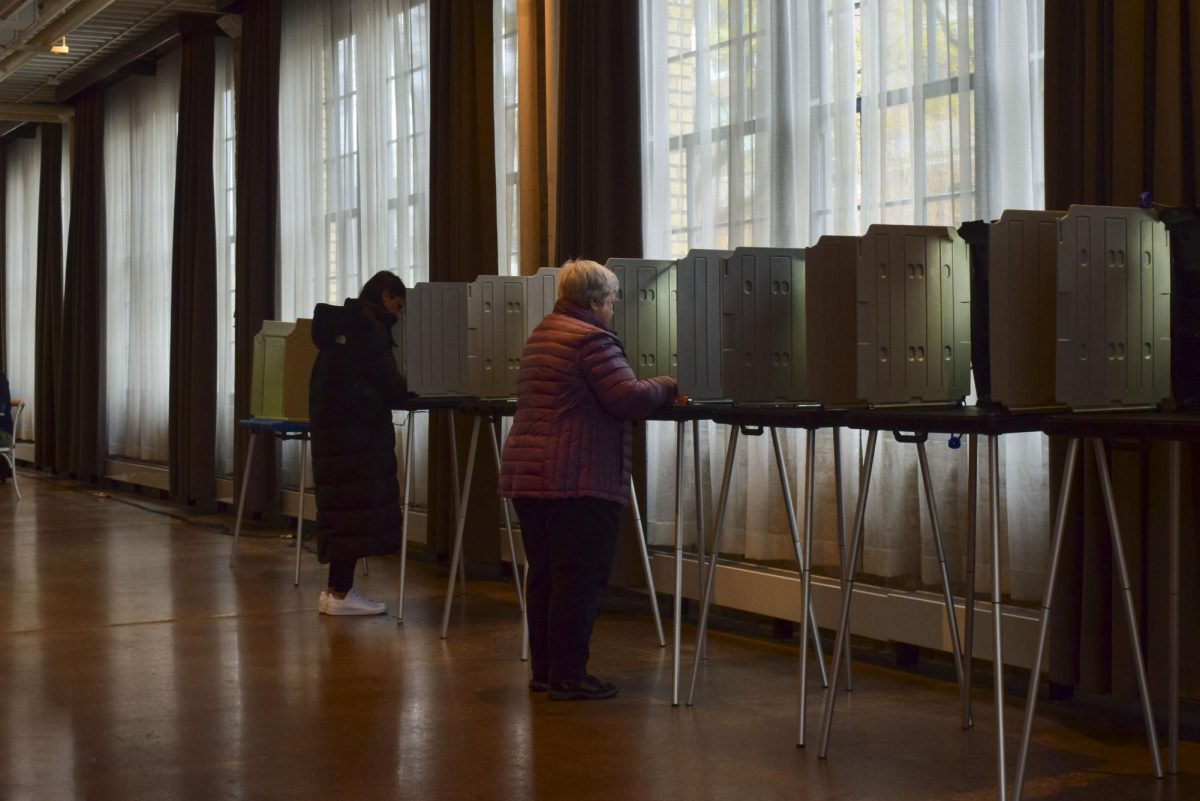As the economy worsens and jobs are lost, more and more students find themselves dropped from mom and dadâÄôs health insurance policy. This means the largest population of uninsured people in the country is growing quickly. Nationally, colleges and universities are combating this trend by requiring students to carry comprehensive health insurance. The Minnesota State Colleges and Universities system is currently piloting a mandatory student health insurance policy at its Moorhead campus this year. âÄúItâÄôs called insurance for a reason,âÄù said Carol Grimm, director of health and wellness for Minnesota State University-Moorhead . âÄúYou donâÄôt need it until you really need it.âÄù A Minnesota Daily analysis of Big Ten schools found about a fifty-fifty split among schools requiring students to be insured.
Making the move to mandatory insurance isnâÄôt always easy. For universities, it can be an intensive, time-consuming process. For students who didnâÄôt have insurance before, it can mean paying for a plan they might not want. The University of Minnesota has required students to have health and hospitalization insurance since the 1970s and slowly but surely, other public and private schools are following its lead. Over the years, the student health benefits plan has evolved to look similar to âÄúrealâÄù insurance, said Dave Golden , public health and marketing director for Boynton Health Service. Schools with voluntary insurance âÄúcouldnâÄôt go out and purchase a plan like this if they wanted to,âÄù he said. âÄúThis is a really good plan.âÄù Susann Jackson , the director of the UniversityâÄôs student health benefits plan, said because of the UniversityâÄôs very large pool of students, âÄúweâÄôve been able to negotiate excellent contracts âĦ so that our students have access to a broad network at very reasonable cost.âÄù Unlike many other plans, the UniversityâÄôs health benefits plan covers 80 percent of most costs with a $2,000 out-of-pocket maximum, and a $3 million lifetime maximum for benefits, Golden said. This year, JacksonâÄôs office has seen an increase in calls from students whoâÄôve been dropped from their parentsâÄô coverage. But even mandatory health insurance doesnâÄôt mean a campus full of insured students, Jackson said. Anonymous surveys show about 10 percent of University students remain uninsured, she said. Campuses with mandatory health insurance, like the University of Michigan, and those with voluntary coverage, like MnSCU had before their pilot program, reported similar rates of uninsured students. Other campuses, such as Purdue University and Indiana University, which are both voluntary environments, reported uninsured rates as high as 20 to 25 percent. Students who have health insurance are less likely to drop out of school as a result of an unexpected illness or injury they canâÄôt afford, an obvious benefit to universities, officials from multiple schools said. Additionally, schools with multiple campuses can pool their students to leverage for better benefits and provide cheaper coverage than private insurers can because of a largely young and healthy population. If a school has mandatory insurance, it can allocate financial aid to students who canâÄôt afford it, said Lesley Sacher , director of the student health center at Florida State University and past-president of the American College Health Association âÄî a group that creates standards for student health insurance plans. Although many college students think of themselves as being generally healthy, school officials agreed insurance is necessary for everyone. âÄúNobody wakes up one day and says, âÄòI think IâÄôll get meningitis todayâÄô,âÄù Sacher said. âÄúThey donâÄôt expect to be in a car accident, or diagnosed with an illness or disease, but it happens. We donâÄôt want those students to have to drop out of school.âÄù Schools with voluntary insurance policies often have more expensive plans that offer weaker coverage. In a voluntary system, only people who are already sick or in need of services buy the plan, Sacher said, making it more expensive overall. Hugh Jessop , executive director and chief financial officer for the Indiana University Health Center said his schoolâÄôs plan is âÄúno comparisonâÄù to the plans offered by schools with a mandatory insurance policy. Patty Blackburn , a student insurance representative from Purdue, said they wouldnâÄôt have the staff capacity to enforce a mandatory insurance policy. She said she thinks everyone should have health insurance, but for that to happen, the health care system needs to be overhauled. âÄúIâÄôm sad that our country has dug its feet in this,âÄù Blackburn said. âÄúI think itâÄôs a crime that we have 47 million people uninsured.âÄù Ian Zier was working toward an undergraduate degree at the University of St. Thomas when the school switched to mandatory health insurance in 2007. While he knew it was hard for some, Zier said he didnâÄôt mind, and actually felt good knowing his friends would have insurance. Zier was covered under his parentsâÄô plan at the time. âÄúItâÄôs really just a wise decision as a student to have health insurance, so I really didnâÄôt see it as a burden,âÄù he said. Zier is now an economy major at the University of Minnesota. After being dropped from his parentsâÄô insurance plan, he researched the different health insurance options, eventually deciding on the UniversityâÄôs student health benefit plan. So far, he said, the plan has been working out well. In comparison to private insurers, the University plan is reasonably priced with fewer hidden costs, Zier said. âÄúI think itâÄôs a very good plan,âÄù he said. âÄúIt works out well for me.âÄù – Emma L. Carew is a senior staff reporter








